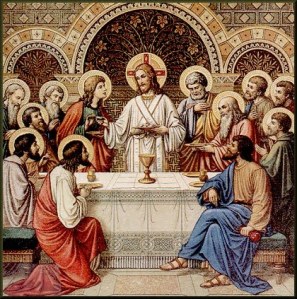 The purpose of this post is to follow up my last one on why the Last Supper was not the First Mass. The next post on Holy Thursday will try to explain exactly what it was: An eschatological banquet enacting a surrogate for sacrifice. But first things first. Four points:
The purpose of this post is to follow up my last one on why the Last Supper was not the First Mass. The next post on Holy Thursday will try to explain exactly what it was: An eschatological banquet enacting a surrogate for sacrifice. But first things first. Four points:
1. A Mass requires the whole Paschal Mystery. The Mass is an anamnetic moment. It is a moment in which the believing community is brought back to the dynamic movement of the Paschal Mystery so as to enter into that moment and imitate the loving self-sacrificial actions of Christ.
Side note: There has been a danger in post-Tridentine theology to speak of the Mass as a re-presentation of the sacrifice of Christ. But this interpretation both fails to take the book of Hebrews seriously and also misunderstands the Jewish concept of “remembrance,” azkarah. Jewish remembrance does not mean that the past event is brought into the present and enacted again. Rather, it means that those who partake in the ritual action are themselves re-presented to the past event. At the Mass, the community of believers becomes present to the Paschal Mystery. Christ is not re-offered or re-presented on the altar of the priest. Rather, the believing community is re-presented to the sacrifice of Christ and, through the power of the Spirit, made part of that self-offering to the Father. Side note over.
The Mass is a memorial of the Paschal mystery. But without that mystery, there could not be a Mass at the Last Supper.
2. A Mass requires the Resurrection. Read the rest of this entry »
Read the rest of this entry »



 Posted by Nathan O'Halloran, SJ
Posted by Nathan O'Halloran, SJ 
